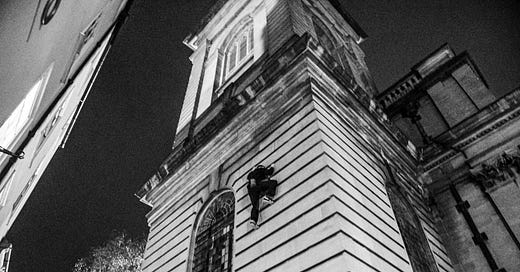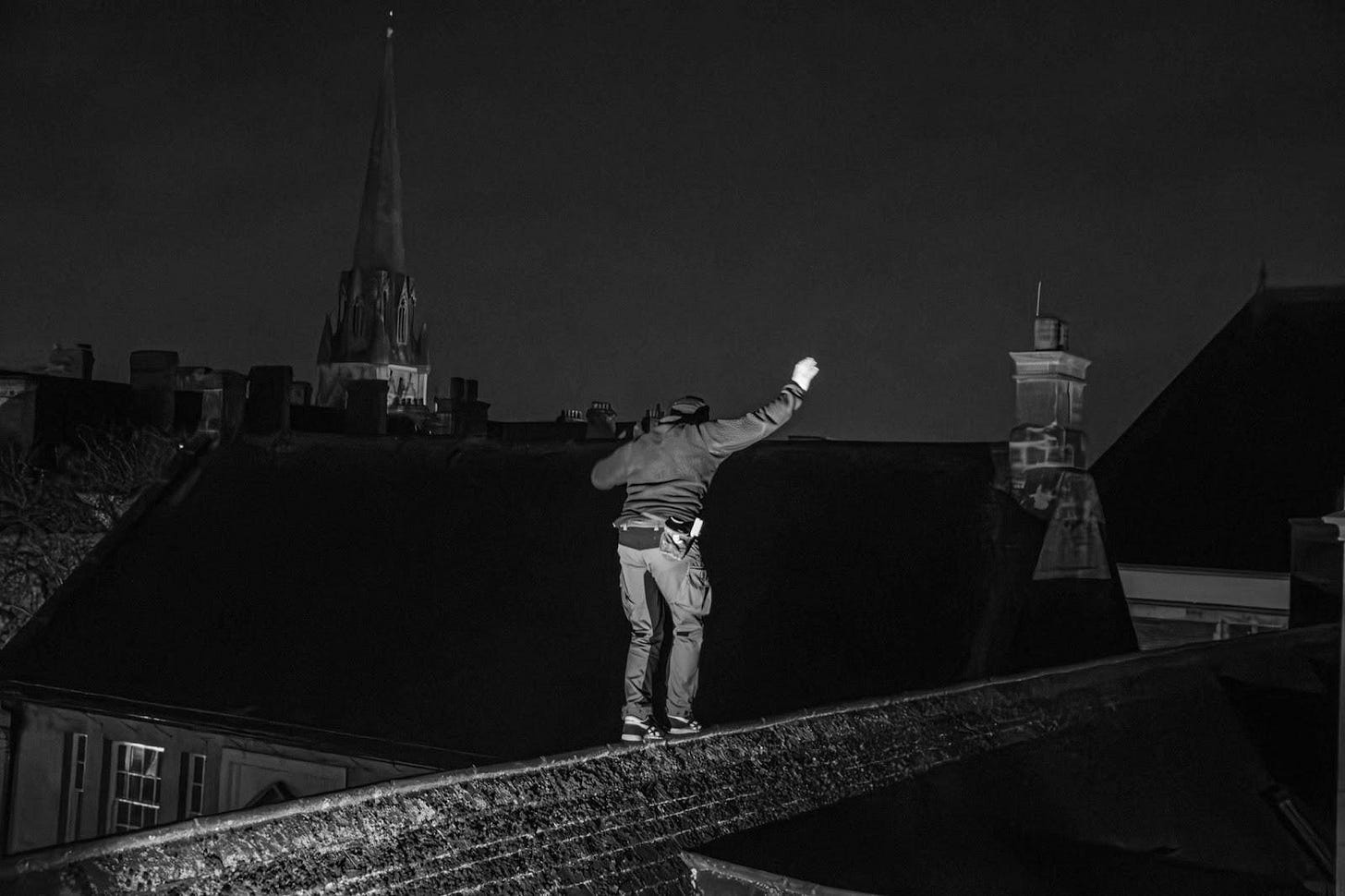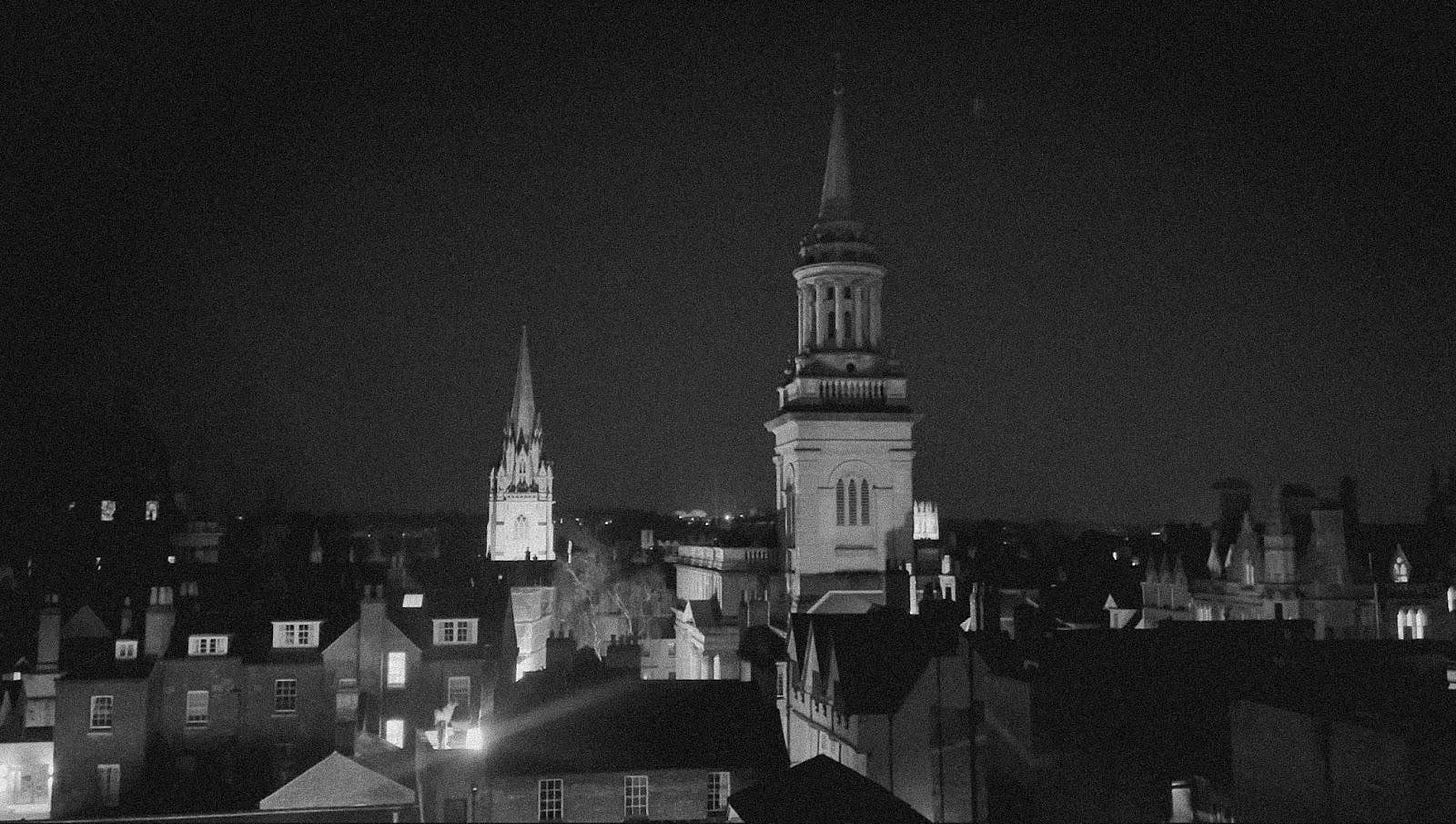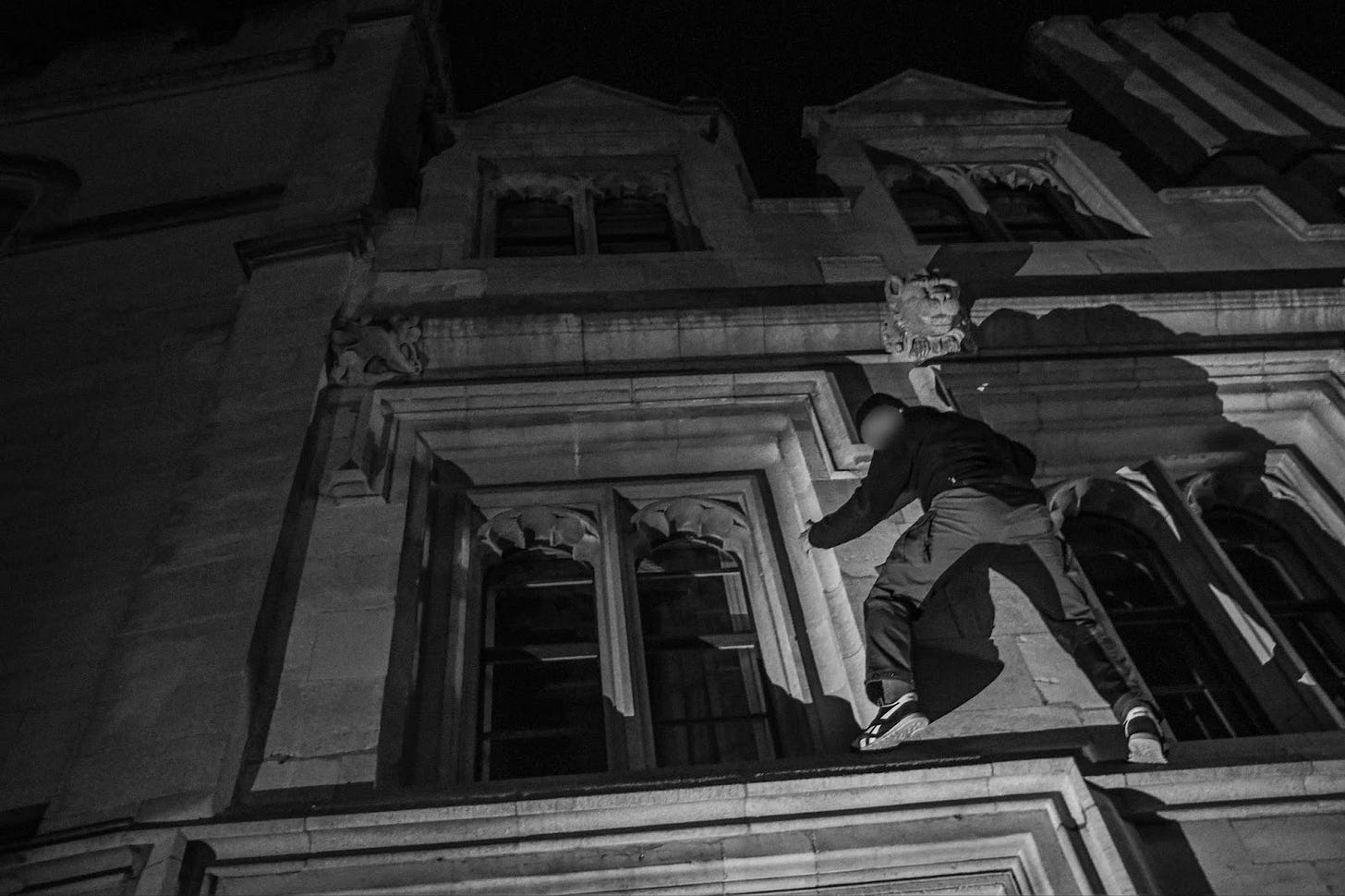What is nightclimbing? And who is mad enough to do it?
Under the cover of darkness, a select group of people exercise their freedom by leaping across the rooftops - but why?
‘You begin to realise that there are very few predecessors who have stood where you now stand, and perhaps you’re the forerunner. You feel blessed, as if you share their story in some way, as if you’ve stepped outside of time and can speak across centuries.’ - John Smith*, Oxford Nightclimber
It’s hard to believe that anyone would describe the arduous odyssey of clambering up a precarious limestone wall in the thick of night as a blessing, yet, those who are immersed within the culture of nightclimbing find both thrills and tranquillity perched upon the rooftops.
Diverging away from traditional mountaineering practices which focus on solving difficult climbing problems; nightclimbing, or parkour de nuit (night parkour), is closer to climbing’s urban cousin, buildering. Often without ropes, or extensive safety equipment, buildering is the act of scaling buildings and other urban architecture. Nightclimbing ups the ante, as climbers ascend buildings submerged in shadow.
Popularised by the illicit societies at Oxford and Cambridge universities, nightclimbing has been around since the 1930s, when rogue members of the Oxford University Mountaineering club first ventured onto the college rooftops. Meanwhile, three hours away, the lifestyle was inspiring literature as well. The Night Climbers of Cambridge was published in 1937, and acted as a guidebook for the intricate pathways and escape routes that traucers would utilise when traversing across the skyline.
Why do it?
Whilst these university groups remain, nightclimbing has become a more national trend today. Begging the question - why?
‘It's a kind of personal development discipline, but also for the purpose of being useful to your friends and family, by having strength and confidence and being a competent individual. That's what it’s about.’
Dan Edwardes, CEO of Parkour Generations, finds value within the original principles of parkour de nuit. Parkour has always been an interdisciplinary practice, training the body just as much as the mind, and night parkour is no different. When balancing along the precipice of a steep drop whilst the unforgiving concrete looms below, there is little room for failure. The stakes are much higher at night; and with high risk comes high reward.
‘The founding group called themselves Yamakasi, a Lingala word that means strong mind, strong body, strong spirit. So it's about this idea of being a complete, strong individual. Physically, mentally, spiritually and ethically.’
The lessons Dan learns are not exclusively applicable to his time spent amongst the upper echelons of a cityscape. If he can win the war within his mind, and overcome the fear stopping himself from making the jump, then he can surmount any physical or mental challenge in other aspects of his life. Dan, and many others enjoy the discipline that night parkour teaches them.
It’s also SERIOUS main character energy.
‘There's something rare and special about moving through a city at night, most people are asleep and the whole world feels like it's yours and yours alone.’
Oxford heritage
Nightclimbing has taken a particular hold in Oxford, with the creation of the elusive ‘Oxford Nightclimbers’. Early students would scale walls to access colleges after curfew, forever treading the line between a great story and potential rustication (an Oxford University term meaning temporary suspension or expulsion). Particularly ambitious students would even summit buildings to ‘acquire’ weather vanes from landmarks such as the Christopher Wren sundial at All Souls college.
Whilst these events and early members are integral to the society’s mythology and foundation, they operate with a different philosophy today - “leave no trace”. Surfaces are only to be traversed so long as they cannot be damaged.
Another essential element of the group is those who join must have a fervent passion and talent for parkour, buildering and urban exploration. The group is now open to members outside of Oxford university, yet the selection process is still rigorous, ensuring only those capable of managing the risks are accepted.
‘If you’re fortunate enough to spy a member perform a jump spanning a roof gap around Radcliffe Square, it’s because they’ve been drilling the same movement pattern under different constraints and conditions for years.’ - John Smith*, Oxford Nightclimber
Applicants first complete a cryptic online puzzle to reveal further questions, of which the answers must be deposited in a specific vantage point without alerting authorities. Phase two includes a briefing course, followed by a Climber Conditioning Review one evening, and then a Fitness Test a few days after. These unforgiving tests whittle down the applicants to a final 12 who possess the necessary grit.
Now the fun can begin.
Oxford is an urban playground after dark, with a plethora of exhilarating climbs and captivating nighttime vistas, and the nightclimbers are sure to enjoy it to its fullest. Radcliffe Square has become a particular hotspot thanks to its abundance of college rooftops, alongside the iconic architecture of the Bodleian library.
Their choices of nocturnal conquests take months of meticulous planning. Even the most seasoned professionals utilise extensive training programs to optimise their performance for the movement patterns they’ll be using in that particular climb. Such planning is a necessity as there are no ropes, no crash mats, and no get out of jail free cards.
The end result speaks for itself.
‘Night Climbing can appear egocentric and conceited. But for those who pursue the discipline, it’s about quiet mastery over mental toughness, risk management, interpersonal confidence, achievement orientation, and building a general sense of control over your emotions and life itself.’
Think before you try
Nightclimbing appears to capture a childlike sense of adventure for those who live and breathe its beautiful madness. They are continually asking themselves curious questions:
Can I climb this?
Can I make that jump?
Is it worth it?
This eternal questioning, and honest answering not only leads them to new frontiers, but keeps them safe. Whilst nightclimbing can entrance outsiders with an idyllic allure, one Oxford nightclimber voiced a word of warning:
‘If it inspires others, let it be for the right reasons. Not for the sake of risk alone, but for the skill, discretion, and spirit of endeavour and adventure.







